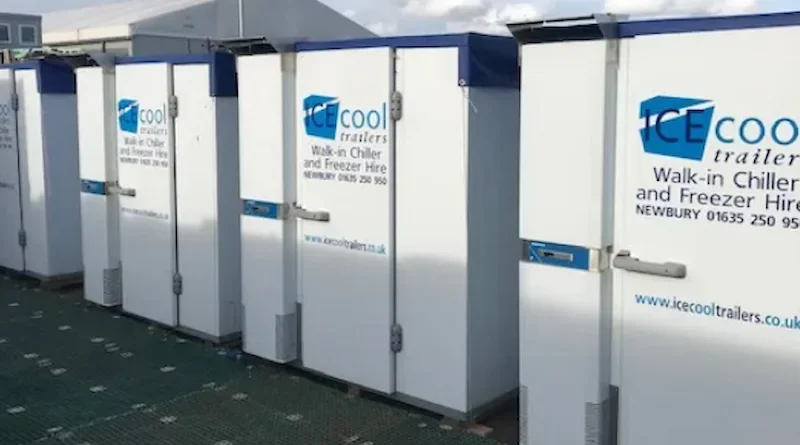How to Handle Emergency Cold Storage Breakdowns Without Losing Your Stock
In the world of food and pharmaceuticals, maintaining the integrity of temperature-sensitive products is paramount. A sudden breakdown in cold storage can lead to catastrophic losses, not just in terms of financial impact but also in terms of reputation and compliance with health regulations. Understanding how to effectively manage these emergencies can make all the difference. Here’s a comprehensive guide on how to handle cold storage breakdowns without losing your stock.
Understanding the Risks
Cold storage breakdowns can occur for various reasons, including:
- Equipment Failure: Compressors, condensers, and other components can fail unexpectedly.
- Power Outages: A sudden loss of power can disrupt cooling systems.
- Human Error: Mistakes in operation or maintenance can lead to failures.
- Natural Disasters: Floods, storms, or other disasters can impact your facility.
Each of these scenarios poses a risk to your stock, which may include perishable food items, pharmaceuticals, or other temperature-sensitive goods. The first step in managing these risks is to have a clear understanding of your inventory and its specific temperature requirements.
Immediate Response Steps
When a cold storage breakdown occurs, time is of the essence. Here’s how to respond effectively:
-
Assess the Situation
- Check the Temperature: Use a reliable thermometer to determine the current temperature inside the storage unit. This will help you gauge how much time you have before the stock is compromised.
- Identify the Cause: If possible, determine the cause of the breakdown. Is it a power issue, or is the equipment malfunctioning? This information will guide your next steps.
-
Implement Contingency Plans
Having a contingency plan in place is crucial. This should include:
- Emergency Contacts: Keep a list of contacts for repair services, maintenance personnel, and suppliers.
- Backup Power Solutions: Consider investing in generators or uninterruptible power supplies (UPS) to maintain cooling during power outages.
-
Move Stock if Necessary
If the temperature is rising and you cannot fix the issue immediately, consider relocating your stock. This is where urgent refrigeration rental services can be invaluable. Temporary cold storage solutions can help you maintain the required temperatures for your products while you address the breakdown. For more information on these services, you can visit Ice Cool Trailers.
Long-Term Solutions
While immediate responses are critical, long-term strategies can help prevent future breakdowns and mitigate risks.
-
Regular Maintenance
Routine maintenance of your cold storage equipment is essential. This includes:
- Scheduled Inspections: Regularly check the functionality of compressors, fans, and other components.
- Cleaning: Ensure that coils and filters are clean to maintain efficiency.
- Calibration: Regularly calibrate temperature monitoring devices to ensure accuracy.
-
Invest in Quality Equipment
When it comes to cold storage, investing in high-quality equipment can save you from future headaches. Look for:
- Energy-Efficient Models: These not only save on energy costs but often have better reliability.
- Advanced Monitoring Systems: Consider systems that provide real-time alerts for temperature fluctuations.
-
Staff Training
Ensure that your staff is well-trained in operating cold storage equipment. This includes:
- Understanding Temperature Requirements: Staff should know the specific temperature ranges for different products.
- Emergency Protocols: Train staff on what to do in case of a breakdown, including how to use backup systems and how to relocate stock.
Monitoring and Documentation
Keeping detailed records of your cold storage conditions can be invaluable. This includes:
- Temperature Logs: Maintain logs of temperature readings to identify patterns or recurring issues.
- Maintenance Records: Document all maintenance and repairs to track the reliability of your equipment.
These records can also be crucial for compliance with health regulations, especially in industries like food service and pharmaceuticals.
Conclusion
Cold storage breakdowns can be daunting, but with the right strategies in place, you can mitigate the risks and protect your stock. By assessing the situation quickly, implementing contingency plans, and investing in long-term solutions, you can ensure that your products remain safe and compliant.
Remember, the key to handling emergencies effectively lies in preparation and response. Regular maintenance, staff training, and quality equipment can significantly reduce the likelihood of breakdowns. And when emergencies do occur, having access to urgent refrigeration rental services can provide the immediate support you need to safeguard your inventory.
In the fast-paced world of temperature-sensitive goods, being proactive is not just an option; it’s a necessity. By taking these steps, you can navigate cold storage breakdowns with confidence, ensuring that your stock remains intact and your operations continue smoothly.
Visit the rest of the site for more interesting and useful articles.

